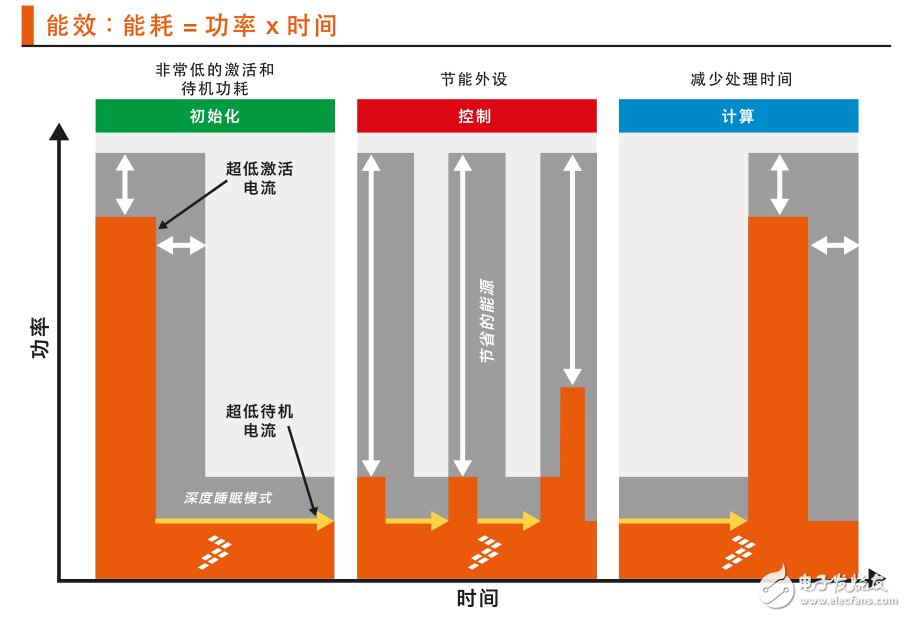introduction
A new era of Internet of Things (IoT) is often mentioned - billions of "smart terminals" are expected to connect applications and devices over the next decade - embedded technology is no longer limited to mechanical Production of basic commodities. The Internet of Things is an era of data and control automation. Interconnected devices and nodes collect information and communicate with intelligent systems to solve problems in real time (for example, when the system detects that no one is at home, it automatically adjusts the thermostat). The essence of embedded technology is the combination of sensing, processing and connectivity to make IoT a reality.
The need for functionality, connectivity and portability has increased exponentially, while mass-market battery technology has not been able to move forward to meet market demand. Terminal nodes are typically battery powered and require extremely long battery life to ensure stability and low cost. On the one hand, the energy budget determines the final design of the new product, while the market does not allow the manufacturer to reduce performance. The challenge for designers is to achieve higher performance goals with the same or even lower energy budget.
The overall trend of energy efficiency
More and more "smart technology" products need to meet more functional requirements of users, and the method of judging energy efficiency by merely viewing the numbers on the original data table has not provided a sufficient reference. The energy budget needs to consider “low power consumption†or how much current is consumed in providing a specific function. In addition, more factors “energy efficiency†or energy consumption over a period of time need to be considered. In other words, we must find out how much power is being used to complete a given task in a unit of time.
In embedded systems, low power is the king, and the goal is to be more energy efficient to complete an application through multitasking management. These tasks can generally be summarized in three phases: the initialization phase, the control phase (which may include data acquisition, communication, and control), and the calculation phase. The formula for reducing energy consumption in these three phases is very simple, with more energy and time to complete more operations (energy = power x time). To truly achieve the goal is not only to optimize one of the phases, but to optimize all phases.
There are three elements to achieving energy savings at all stages. First, there must be less activation and low standby power consumption. Second, there must be energy-efficient peripherals that are intelligent, collect, process, and store data without waking up the CPU. Third, the processing time of the calculation phase must be reduced to return to deep sleep mode and then the entire process can be restarted.
Freescale delved into all phases and aspects of the MCU in order to solve the bigger problem: How do you do more with less power? Considering the overall concept to consider energy efficiency is still relatively new to the current market. Freescale is committed to helping customers benefit from this new approach.
KineTIs L Series: The world's most energy efficient 32-bit MCU
Freescale has been focusing on emerging application trends and developing solutions for customers for decades and is leveraging these experiences to deliver energy-efficient product solutions for a wider range of applications. The KineTIs MCU portfolio offers superior low-power performance with intelligent feature integration, extensive peripherals and high scalability. Multiple KineTIs MCU families, including the KineTIs L series, are the best examples of Freescale's energy-efficient solutions.
The Kinetis L-series MCUs are new to the Kinetis portfolio and offer significant improvements in functionality and efficiency compared to comparable entry-level MCUs, enabling significant energy efficiency improvements during initialization, control and calculation. Please pay attention to the energy efficiency shown in Figure 1. The figure shows the energy curve of the Kinetis L series in orange versus other similar products with a brown curve.

Figure 1: The Kinetis L Series MCUs greatly increase energy efficiency at all stages of the application, namely the initialization, control and calculation phases.
In the development of the Kinetis L series, the focus is on a seemingly simple concept: how to acquire data without CPU intervention, then quickly wake up the MCU, perform related functions as quickly and efficiently as possible, and then return to sleep mode? The result of the final implementation is to greatly reduce the energy consumption of the entire board under the curve (see Figure 1). To achieve this result, we used the ARM Cortex-M0+ processor to use ultra-low power mode for multiple use cases. There are energy-efficient architecture technologies and a range of autonomous peripherals for intelligent power management.
The MIni Frost Heater warm the room as it passes over a heated coil, The heated air rises naturally or is forced out by air preads into the space to warm room.
A Frost heater heater is a type of heater that uses convection currents to heat and circulate air. These currents circulate throughout the body of the appliance and across its heating element.
Mini Convector Heater including glass convection heater, Metal Convection Heater, also mini convector heater can be a frost heater.
welcome to OEM,thank you
Frost Heater
Frost Fighter Heater,Frost Protection Heater,Dimplex Frost Watcher,Frost Watch Heater
Fenry manufacturing Co., Ltd , https://www.cnfenry.com